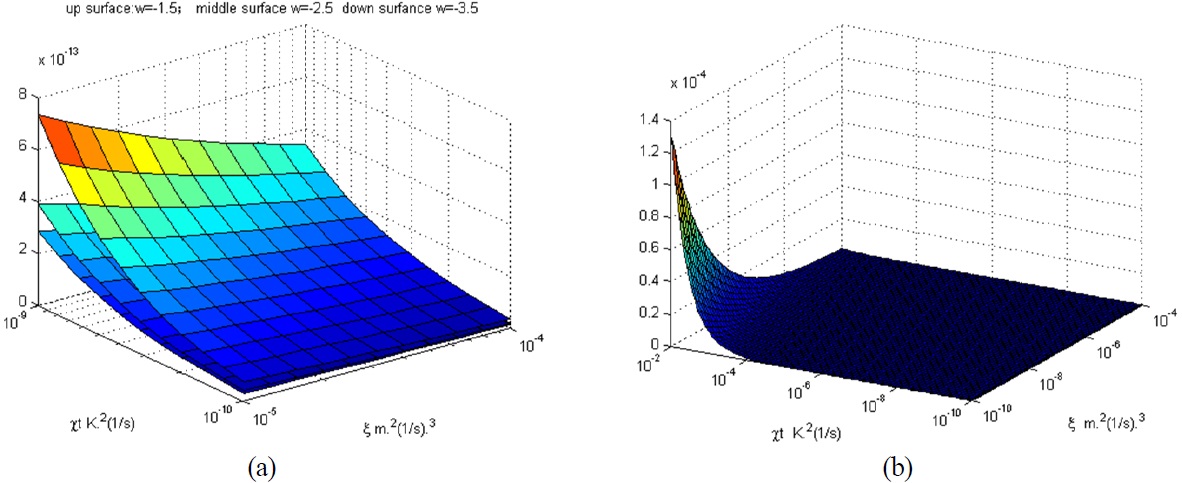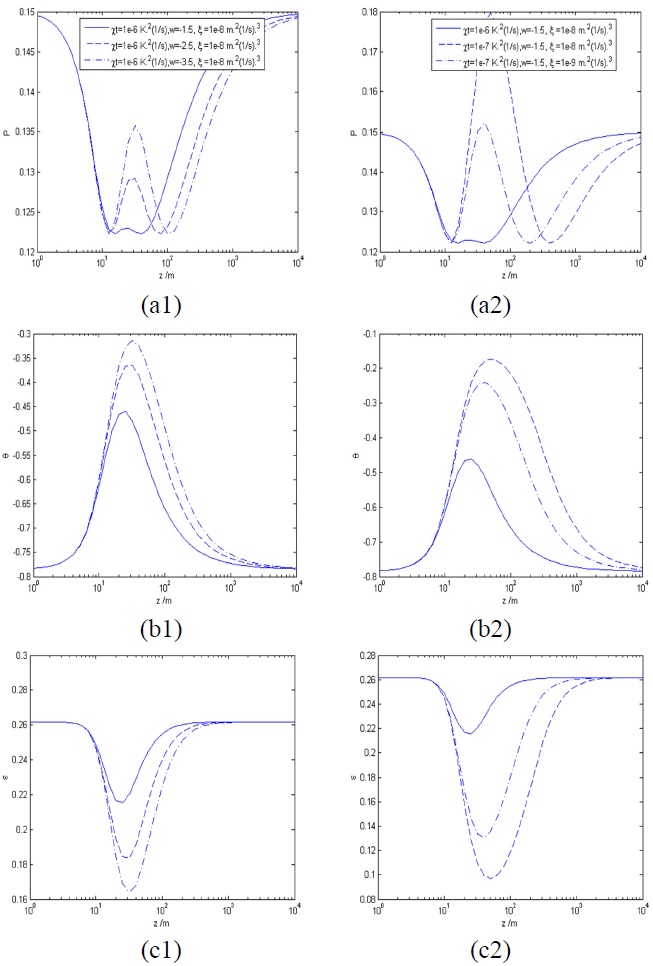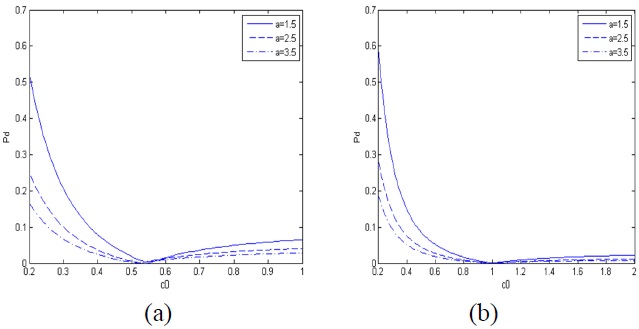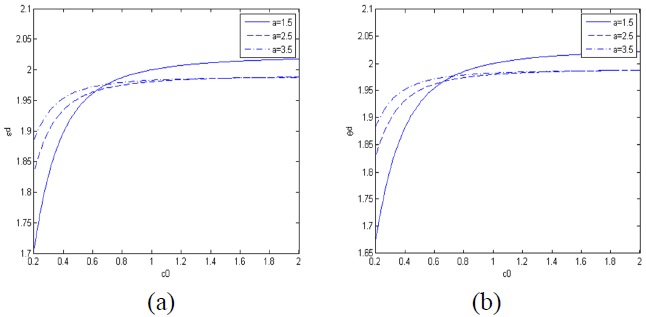



Based on the extended Huygens-Fresnel principle and generalized Stokes theory, the evolution of polarization properties of beams generated by quasi-homogenous (QH) sources propagating in clear oceanic water was studied by the use of the oceanic turbulence spatial spectrum function. The results show that the beams have similar polarization self-reconstructed behavior under different turbulence conditions in the far field, but if the propagation distance is not long enough, the degree of polarization (DOP) fluctuates with much more complexity than state of polarization (SOP) of QH beams. The self-reconstructed ability of DOP at the special distance in turbulence would get to the best value if the values of coherence of width were chosen suitably, but for SOP, it has no best value.
The QH beams which can be generated by SLMs have been studied and used widely in recent years [1]. The coherence and polarization properties of quasi-homogenous sources in the far field has been studied by Korotokva [2]. The coherence of properties of the field generated by a beam radiated from a quasi-homogenous electromagnetic source scattering on QH media has been studied by Xin [3]. Chen and Li have been researched the coherence properties and polarization modulation of QH beams scattered from anisotropic media [4-5]. The propagation properties of laser beams in random media like turbulence or human tissue are important for applications such as optical imaging, remote sensing and communication systems so more and more researchers are attracted [6-11]. The polarization “self-reconstructed” phenomenon in atmosphere turbulence has been known for a long time. The normalized spectrum of the beam generated by QH source after propagating through turbulent media has been proved to be equal to the normalized spectrum of the source [12]. The degree of polarization of electromagnetic Gaussian-Schell beams and partially coherent electromagnetic flat-topped beams also have self-reconstructed properties in atmospheric turbulence [13-14]. However, recent reports have shown that beams generated from anisotropic sources don’t have polarization self-reconstructed properties in turbulent media [15-16]. On the other hand, oceanic turbulence is an important natural random medium but the light propagation though oceanic turbulence is a relatively unexplored topic compared to that in other media. The spatial spectrum model of oceanic turbulence combining temperature and salinity fluctuations is only used by a few articles to study the light propagation in the oceanic waters [16-18].
In this paper, we focused on the polarization features of QH beams propagating through oceanic turbulence. The analytical expressions of on-axis generalized Stokes parameters of QH beams were calculated,then the variations of DOP and SOP of QH beams traveling through oceanic turbulence have been simulated. The self-reconstructed properties of such beams in the far field in turbulent media have been analyzed under different source parameters and turbulence conditions.
For beams generated by quasi-homogenous (QH) sources the spectral density
The superscript (0) denotes quantity pertaining to the incident field. The spectral density can be expressed as the trace of cross spectral density matrix:
(r1,r2,
For
The cross spectral density matrix of the beam at the receiving plane can be derived by the extended Huygens- Fresnel principle:
Where r1, r2 are two arbitrary position vectors of points on the source plane while
is the wave number of the beam. The last term in Eq. (5) represents the correlation function of the complex phase perturbed by random media:
Where
describes the strength of turbulence perturbation.
The model of the spatial power spectrum of refractive index fluctuations of homogenous and isotropic oceanic turbulence can be described as a linearly polynomial of temperature fluctuations and salinity fluctuations:
In Eq. (7),
From Eq. (3)-Eq. (6), the cross spectral density matrix of the electromagnetic field on the receiving plane can be expressed as:
As a matter of convenience, we make changes of the spatial arguments:
With the help of Eq. (9), the cross spectral density matrix on the receiving plane is derived:
Where
The polarization properties of an electromagnetic beam at a point in space can be determined by use of Stokes parameters which have recently been generalized from one-point quantities to two-point counterparts [20]. They contain not only polarization properties but also coherence properties of beams [21] and can be measured by Young’s interference experiment [22-23]. The changes of generalized Stokes parameters in optical system or random media are also interesting problems and have received a lot of attention [24-25]. The four parameters can be expressed as follows:
where
are Pauli spin matrices:
represents the cross-spectral density matrix (CSDM) of the beam:
If we only considered polarization properties of one point, i.e.,
Inserting Eq. (11) into Eq. (12), and using the conditions of
The polarization properties can be expressed as the functions of these four parameters.
We considered the degree of polarization and the state of polarization of QH beams in this paper. DOP is used to describe the polarized portion of a beam. DOP=1 means perfectly polarized beam while DOP=0 means unpolarized beam. The state of polarization (SOP) includes the azimuth angle and ellipticity. The azimuth angle
For convenient, we normalized three Stokes parameters by
The DOP and SOP can be expressed as the function of normalized Stokes parameters:
Because of the uniform polarization properties of quasihomogenous beams, we only need to consider the on-axis point of the beam. And in order to prove the polarization self-reconstructed properties of QH beam, we should study far-field polarization properties of normalized Stokes parameters. First, let’s consider the limit as follow:
Where
can be obtained from Eq. (1) - Eq. (4). Then substituting into the limit of the ratio of two parameters, we get:
In turbulent medium,
so
These parameters are modulus values of relative difference of the on-axis DOP and SOP between the source plane and the receiving plane at a special distance z in turbulences, the self-reconstructed ability will be better when these values get closer to 0.
Figure 1 shows the strength of oceanic turbulence changes with turbulence parameters: w,
Figure 2 shows the changes of normalized Stokes parameters with distance at different a. The DOP and SOP we calculated in Eq. (17) and Eq. (19) could be expressed as the function of these parameters, so the behavior of generalized Stokes parameters decides the evolution of DOP and SOP of the beam through propagation.
In Fig. 3, we illustrated how the DOP and SOP of the QH beams depend on the parameters of oceanic turbulence. The effect of w on the changes of DOP and SOP has been shown in Fig. 3(a1)-(a3) and the effect of
In Fig. 4, the influence of coherent width and the coefficients
In Fig. 5, the self-reconstructed behavior of azimuth angle
(1) Both DOP and SOP fluctuate at the range of 0.01 km
(2)
(3) DOP varies with more complexity with distance in ocean waters than SOP. The self-reconstructed distance of both decreases with the increase of
(4) When
(5)
According to our analysis, the normalized Stokes parameters will be affected by temperature and salinity fluctuations so the DOP and SOP will also be affected. And




